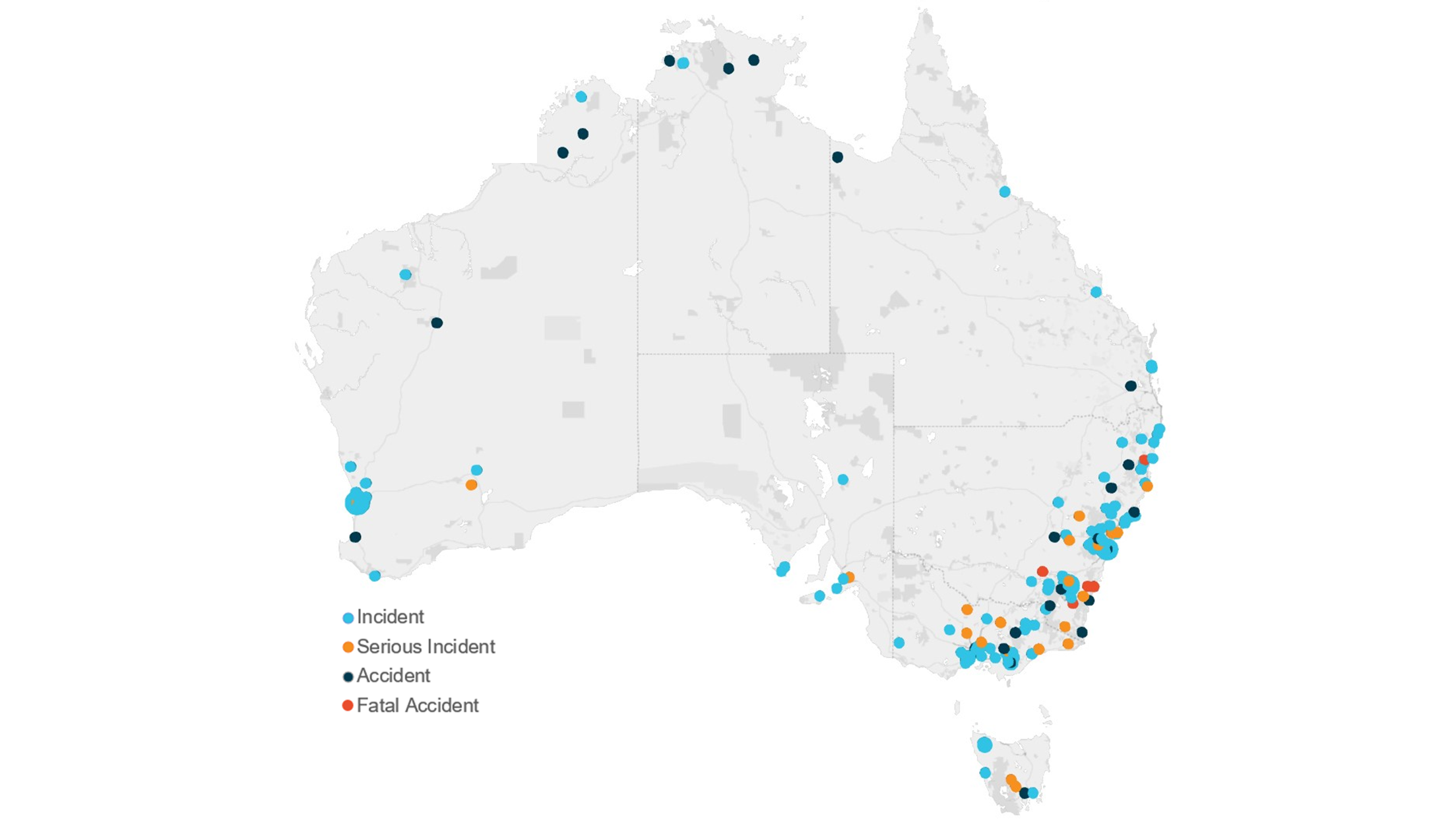The Australian Transport Safety Bureau (ATSB) has published a statistical report of aerial firefighting accident and incident occurrence data spanning a near 20-year period, in response to a request for information from the Royal Commission into National Disaster Arrangements.

The safety analysis forms a central element of the ATSB’s response to the Royal Commission, commonly referred to as the Bushfire Royal Commission, which requested information on “key operational and safety challenges encountered in coordinating and responding to fires associated with the use of aircraft and aerial firefighting techniques”.
ATSB director transport safety, Dr. Stuart Godley, noted the report details both the number of occurrences and, where data was available, the rate of occurrences per hours flown and number of flights, for aircraft conducting aerial firefighting operations, including water-bombing, surveillance and air attack tasks, for the period July 1, 2000 to March 31, 2020.
“Aviation activity relating to aerial firefighting has increased over recent bushfire seasons. Estimates for the most recent season, 2019 to 2020, have been that there was a four-fold increase in aerial firefighting activity compared to other recent bushfire seasons,” Godley noted.
“More occurrences involving aerial firefighting aircraft were reported to the ATSB this financial year (between July 2019 and March 2020) than in any prior financial year in the study period. Further, there were two fatal aerial firefighting accidents between August 2018 and March 2020, whereas in the previous 17 years there were only three fatal accidents,” Godley said. “However, given the amount of recent bushfire activity in Australia, an increase in reported occurrences could be expected, so this does not indicate an increase in risk per flight.”
Godley stressed that while the number of occurrences does give some indication of overall risk, the ATSB could only draw upon limited exposure data to determine the rates of occurrences, either on a per hours flown or numbers of flights basis.
“The ATSB was only able to draw upon Bureau of Infrastructure Transport and Regional Economics (BITRE) exposure data for Australian-registered aircraft conducting aerial firefighting from 2014 to 2018, while data was not available for hours and flights flown by foreign-registered aircraft operating in Australia,” he said.
Foreign-registered aircraft accounted for about 16 percent of reported aerial firefighting occurrences in Australia, the report notes. Foreign-registered aircraft were also significantly larger in comparison to Australian-registered aircraft, with an average maximum take-off weight around 10 times higher.
“Generally, the rates for incidents, serious incidents and accidents are relatively low for aerial firefighting compared to other aerial work activities,” Godley noted.
Read the research report here.









